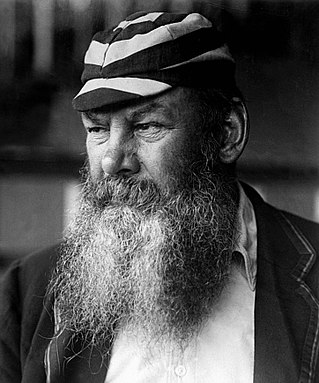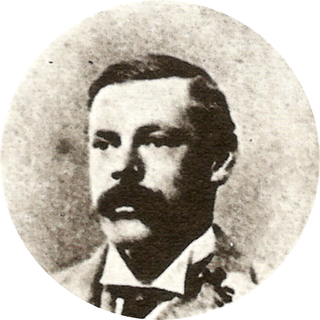
William Gilbert Grace was an English amateur cricketer who was important in the development of the sport and is widely considered one of its greatest players. He was nominally amateur as a cricketer, but he is said to have made more money from his cricketing activities than any professional cricketer. He was an extremely competitive player and, although he was one of the most famous men in England, he was also one of the most controversial on account of his gamesmanship and moneymaking.

Bath Rugby is a professional rugby union club in Bath, Somerset, England. They play in Premiership Rugby, England's top division of rugby.

Somerset County Cricket Club is one of eighteen first-class county clubs within the domestic cricket structure of England and Wales. It represents the historic county of Somerset. Founded in 1875, Somerset was initially regarded as a minor county until official first-class status was acquired in 1895. Somerset has competed in the County Championship since 1891 and has subsequently played in every top-level domestic cricket competition in England. The club's limited overs team was formerly named the Somerset Sabres, but is now known only as Somerset.

Lansdown is a suburb of the World Heritage City of Bath, England, that extends northwards from the city centre up a road of the same name. Among its most distinctive architectural features are Lansdown Crescent and Sion Hill Place, which includes a campus of Bath Spa University.

Herbert Tremenheere Hewett was an English amateur first-class cricketer who played for Somerset, captaining the county from 1889 to 1893, as well as Oxford University and the Marylebone Cricket Club. A battling left-handed opening batsman, Hewett could post a large score in a short time against even the best bowlers. Capable of hitting the ball powerfully, he combined an excellent eye with an unorthodox style to be regarded at his peak as one of England's finest batsmen.

Newbridge is a largely residential electoral ward on the western edge of Bath, England.
This article is a summary of 2,775 first-class cricket matches played by Somerset County Cricket Club to the end of the 2022 season.

William Nichols Roe was an English first-class cricketer who played for Somerset County Cricket Club and Cambridge University in the late 19th century. A right-handed batsman who could play aggressively, but with a sound defensive method, Roe was considered one of Somerset's leading batsmen of the era. He played without merit for Cambridge, and only achieved his Blue during his final year at the university.
Samuel Evan Butler was an English cricketer who attended St Alban Hall and Brasenose College, Oxford. In the University Match of 1871 he took all ten Cambridge University wickets in their first innings, the only time this has been achieved in the fixture, and the only time an Oxford bowler has taken ten wickets in any first-class innings.

Edward Sainsbury was an English cricketer who represented, and captained, Somerset County Cricket Club in the late 19th century. During a 10-year first-class cricket career, he also represented Gloucestershire and the Marylebone Cricket Club (MCC).

Frederick Leslie Angell was an English first-class cricketer who played for Somerset County Cricket Club. He was born in Norton St Philip, Somerset and died at Bath, Somerset.

Lansdown Cricket Club, formed in 1825, is recognised as the earliest official organised cricket club in Somerset. Originally based in Lansdown, since 1869 the club has been based at Combe Park, Bath, adjacent to the Royal United Hospital.

Surgeon-Captain John Ernest Trask was an English Army doctor and amateur cricketer. He served in the Army Medical Services from 1887 until his death from cholera in Sudan during 1896. He was posthumously mentioned in dispatches, in which he was praised his role in managing the cholera outbreak. He is thought to have been referred to in Sir Arthur Conan Doyle's 1918 work The New Revelation, as a spirit Doyle converses with.
Hamilton Ross was an English cricketer who made 20 first-class appearances between 1885 and 1895. He played twelve first-class matches for the Marylebone Cricket Club (MCC), and also appeared for Middlesex and Somerset. A right-handed batsman, he occasionally played as wicket-keeper.

Christ Church Ground is a cricket ground in Oxford, England. The ground is owned by Christ Church, a constituent college of the University of Oxford. Privately owned, it was the preferred venue in Oxford for matches where a gated admission was to be levied on spectators, typically in matches between Oxford University and a touring international team. The ground was a first-class cricket venue from 1878 to 1961, hosting 37 first-class matches. After 1961, the University Parks became the preferred venue for all first-class matches in Oxford, but it remained in use in minor counties and one-day cricket by Oxfordshire until the start of the 21st century and hosted a Women's One Day International during the 1993 Women's Cricket World Cup.
In the 1891 season, Somerset County Cricket Club returned to first-class cricket after a five-year absence. They played in the official County Championship, which had been founded the previous year, for the first time, finishing in joint fifth place.
George Tiernay Mirehouse was an English gentleman and amateur cricketer who appeared in 13 first-class cricket matches for Cambridge University, Somerset and the Marylebone Cricket Club in the 1880s. Primarily a right-arm medium-fast bowler, Mirehouse took 22 first-class wickets at an average of 27.54.
W. G. Grace established his reputation in 1864 and, by 1870, was widely recognised as the outstanding player in English cricket.












